Remembering Our Ancestors: Maps and Genealogy Resources for Armenian-Americans
When I began working in the Map Division of the New York Public Library in 1978, the influence of the 1977 television miniseries Roots had taken hold. Author Alex Haley traced his family history back to Africa, and inspired many of us to do likewise. While the Milstein librarians know genealogy as a longstanding interest among their users, I learned from Map Division old-timers that the spillover to our division at that time was noticeable. These users wanted help from map librarians to find the villages, towns, and cities, and even farms, streets, and houses, that their ancestors hailed from or where they resettled.
Another notable wave of interest in maps for genealogy ensued when ship passenger lists became available on the Internet. As these lists often include the last place of residence of the immigrant, the curious researcher wants to see where these places appear on old maps. They may want to determine, from maps and map-related resources, the hierarchy of administrative divisions within which the places were and are located so that they can search out more family records. Or they may simply want to feel the connection that a map from the ancestor’s time provides.
As an Armenian-American keenly aware of the devotion to lost homeland of my ethnic compatriots, I’ve always been on the lookout for Armenians among the researchers from many large ethnic groups who have found their way to Room 117 at 5th Avenue and 42nd Street in NYC, now known as the Lionel Pincus and Princess Firyal Map Division. As Armenians all over the world remember their forebears at this time, as we commemorate on April 24 the 100th anniversary of the beginning of the Armenian Genocide, one way to honor those who were not able to find refuge is to learn all we can about them and celebrate our link to them. The New York Public Library has many resources to help us find out about what our ancestors’ lives were like in good times as well as bad, and about that special generation that connects us with them, those who were able to make the trip to safety and pass on a heritage to their descendants.

Image ID: 1952871

The librarians of the Milstein Division of United States History, Local History and Genealogy are especially adept at helping library users search for documents such as ship passenger lists, naturalization papers, census records, city directories and more, made available via such collections of databases as Ancestry Library Edition.

A couple of specialized resources of note in that division are Armenian immigrants: Boston 1891-1901, New York 1880-1897, compiled by Linda L. Avakian, which indexes names from the passenger lists, and Genealogy for Armenians, by Nephi K. and LaPreal J. Kezerian. Among the helpful features and tips of the latter publication are lists of surviving church records that have been microfilmed, and examples of variations in handwritten Armenian alphabet script.
Once a researcher has a place name to search, whether from personal knowledge of family history or from documents, the librarians in the Map Division can help in the discovery of a map showing the location of that place. Even if we know the location of the place, sometimes we simply want to see it on a map published at the time our ancestors were living there, on a map that our relatives themselves might have seen. Because of the foresight of the Astors and Lenoxes, whose collections formed the early core of The New York Public Library’s holdings, because of the generosity of donors through the years, and because of the collection development work of NYPL’s librarians, the Map Division is blessed with rich 19th and early 20th century cartographic resources, as well as more recent materials, that can reveal the locations of towns and villages in many homelands. Using a combination of gazetteers, indexes, atlases, and maps of varying amounts of detail, we can do our best to zoom in on these places.
The modern republic of Armenia encompasses what was historically the eastern part of Armenia, in the southern Caucasus, between the Black and Caspian Seas.

This 1721 map from John Senex's New General Atlas shows Armenia with its western territory, in the highlands east of the Anatolian peninsula.
Its boundaries were somewhat amorphous, as it was in a crossroads of cultures and, through much of its history, under the power of various empires. But this is basically the historic homeland where there was a concentration of Armenian population. (There were also many Armenians living in the western parts of Asia Minor, on the Anatolian Peninsula, and there was an area called Lesser Armenia or Cilicia, toward the Mediterranean Sea, where Armenians had also settled during earlier centuries.)
Those who emigrated from the western, Ottoman-controlled part of Armenia in the decades just prior to World War I, and those who survived the genocide and deportations during and just after the war—when Western Armenia was basically depopulated of Armenians—made up the first and second waves of Armenian immigration to the United States. So for the descendants of these people, who might be trying to locate places that existed in Western Armenia around the last decade of the 19th century and the first two decades of the 20th century, here are some resources that might help.
 Robert H. Hewsen’s monumental Armenia: A Historical Atlas, with cartography by Christopher C. Salvatico, is a relatively recent publication (2001), but is valuable for finding places of the past because of the scholarly research behind it, the good indexing, and the clarity and variety of scales of its maps. The index includes cross references between variant forms of place names, and then directs the reader to maps and map locations showing places in context. The atlas contains smaller-scale maps of historic Armenia in different periods of time, intermediate-scale maps of the pre-World War I Armenian provinces of the Ottoman Empire, and larger-scale maps (more zoomed in) for the areas around the cities with large Armenian populations, which must have served as market towns as well as religious and cultural centers for many surrounding towns and villages. The larger-scale maps have the space to show the smaller villages by name, though granted, cover a smaller amount of territory. For example, Map 164 is "Armenia on the Eve of the First World War, 1878-1914” at the scale of approximately 1:3,500,000 (about 55 miles to the inch); Map 186 is "The Vilayet of Mamuretülaziz ...” (the province containing Harput, or Kharpert to Armenians) at the scale of approximately 1:1,500,000 (about 24 miles to the inch); and Map 170 "Kharpert and its ‘Golden Plain’” at the scale of approximately 1:255,000 (about 4 miles to the inch). The atlas even includes some city and town plans, presumably in cases where source material was available.
Robert H. Hewsen’s monumental Armenia: A Historical Atlas, with cartography by Christopher C. Salvatico, is a relatively recent publication (2001), but is valuable for finding places of the past because of the scholarly research behind it, the good indexing, and the clarity and variety of scales of its maps. The index includes cross references between variant forms of place names, and then directs the reader to maps and map locations showing places in context. The atlas contains smaller-scale maps of historic Armenia in different periods of time, intermediate-scale maps of the pre-World War I Armenian provinces of the Ottoman Empire, and larger-scale maps (more zoomed in) for the areas around the cities with large Armenian populations, which must have served as market towns as well as religious and cultural centers for many surrounding towns and villages. The larger-scale maps have the space to show the smaller villages by name, though granted, cover a smaller amount of territory. For example, Map 164 is "Armenia on the Eve of the First World War, 1878-1914” at the scale of approximately 1:3,500,000 (about 55 miles to the inch); Map 186 is "The Vilayet of Mamuretülaziz ...” (the province containing Harput, or Kharpert to Armenians) at the scale of approximately 1:1,500,000 (about 24 miles to the inch); and Map 170 "Kharpert and its ‘Golden Plain’” at the scale of approximately 1:255,000 (about 4 miles to the inch). The atlas even includes some city and town plans, presumably in cases where source material was available.

Another modern resource, held offsite by the library’s General Research Division, provides both a detailed index and simple illustrative maps. That is the French publication, Les Arméniens dans l’Empire Ottoman à la Veille du Genocide, by Raymond H. Kévorkian and Paul B. Paboudjian. It is based on a census of Armenians carried out by the Armenian Church before World War I. Though the French language may affect the romanization and therefore spelling of some place names, non-readers of French still have much to gain. The strengths of this book are its comprehensiveness and its index, getting down to the smallest villages, and its supplementary information about places, including population figures and religious institutions, along with old photos. It also shows the administrative divisions within which villages, towns and cities were located—cazas, sanjaks, and vilayets. It includes basic outline maps, with no latitude and longitude for precise location—only boundaries, coastline, and relative positions of towns for geographical reference.
As for the contemporary maps, contemporary, that is, with the last of our ancestors to inhabit the homeland, there are three that I would like to tell you about.
First is a British map. H.F.B. Lynch was a traveler who wrote about his sojourn through Armenia, and along with F. Oswald and W. Shawe, mapped Armenia for his 1901 book, Armenia, Travels and Studies. Map of Armenia and adjacent countries may be found folded into the book, or flattened as it is in our library. (You can see the fold marks and some deterioration, but now the map has been encapsulated in polyester film for protection.) The map scale is 1:1,000,000, or about 16 miles to the inch. We welcome any interested individuals to come into the library in order to see the whole map and to read the place names, as we do not have a digital version yet. Interspersed through Lynch’s text are page-sized plans of such cities as Trebizond (now Trabzon) and Van. One may view these in the online version of Lynch’s text at the HathiTrust site.
Second is a French map.
Here is the title sheet of a 1:1,000,000-scale map of Asiatic Turkey, Carte de la Turquie d’Asie, in a set of 8 sheets, published by the French Service Géographique de l'Armée in 1897. At the bottom of the title sheet is a wonderful multi-lingual glossary, translating geographic terms from romanized Turkish, Arabic, and Persian into French. It shows, for example, that the Turkish “dagh” means montagne (in French) or mountain, while the Arabic for mountain is “djebel.” And “denix” is Turkish for mer (in French) or sea, while in Persian it’s “daria.”
This is NYPL’s homemade index map to the set. (NYPL holds this map set, though the images here of the published maps come from copies at the American Geographical Society Library.) Sheet 4 actually covers much of Western Armenia, from Van in the east to Harput/Kharpert in the west.
Here is a detail of the area just east of Harput, spelled here Kharpout.

Third is a German map. This is the map index to Karte von Kleinasien, a set of maps of Asia Minor at scale 1:400,000 (about 6 miles to the inch) produced by Richard Kiepert between approximately 1902 and 1916.

Here is a detail from the sheet that covers Harput, but here it’s spelled Charput, on the eastern edge of this sheet. (This detail comes from the sheet that is shown in full at the beginning of this blog posting.) A notable feature of this set of maps is track lines, which mark the routes of travelers who wrote about their travels in the area, and presumably provided source material to the map maker. Abbreviations indicate the names of the explorers. Here in the southeast corner of the map, along one track is the label “Ainsw.” When you look at the key in the lower right margin of the sheet, you see that “Ainsw” represents Ainsworth. Search this name in NYPL’s Classic Catalog along with title word “Armenia,” and you’ll find William Ainsworth’s 1842 Travels and Researches in Asia Minor, Mesopotamia, Chaldea, and Armenia. At the library, one thing leads to another if you pursue a curiosity about the region of your ancestors. This set of maps by Richard Kiepert has been digitized by the library and is available in the Digital Collections, where, when all goes well, you can zoom in to read the place names.

Searching for the name of a tiny place on a map with hundreds of place names can be a tedious task. While the maps just described don’t have their own indexes to lead readers to the places they show, they do have indications of latitude and longitude, in effect, x- and y-coordinates that designate locations. Latitude measures distance in degrees, minutes and seconds north or south of the equator; longitude measures degrees, minutes and seconds east or west of a defined prime meridian. So any gazetteer that lists place names alphabetically (or allows you to search by place name) and provides latitude and longitude coordinates (for example, 38° 42' 14" N, 039° 15' 02" E , for Harput) to describe the locations of the names in its database can serve as an index to these maps.
The GEOnet Names Server is a database of place names with latitude and longitude coordinates maintained by the U.S. military based on forms of names approved by the United States Board on Geographic Names. Its predecessor print source is the series of Board on Geographic Names gazetteers. Their downside for our purposes is their orientation towards current accepted forms of names, with limited cross-references from other forms. Also, GEOnet is not particularly browse-friendly, though you can truncate using a “starts with” search, or do a spatial search by creating a bounding box with geographic coordinates. You may find that scanning possible spellings on a page in the printed gazetteers works better for you. (Request volume 46, 1960, or volumes 214-215, 1984, for Turkey.)
Another online source that can be used as a gazetteer is the Getty Thesaurus of Geographic Names. Its focus is place names that are related to works of art, architecture, and material culture. Though it is not comprehensive, it does offer alternate forms of names that you might not find elsewhere, it includes historical places, and it does include latitude and longitude coordinates.
GeoNames is yet another online database to search for geographic names and their locations. It indexes alternate forms of names, provides geographic coordinates, and connects the user with modern satellite imagery of the locations. Users “may manually edit … and add new names using a user friendly wiki interface,” so it should be possible to add alternate forms of names to the database.
Before concluding with some information about non-map resources on the nature of these places our ancestors left, and what their life was like there, I’d like to introduce briefly two other types of map resources in the library.
First are the classics in the history of cartography, whether original materials or facsimiles, that bring depth to our collections by showing how people of past times viewed the world and made innovations in sharing those views.
How Armenia is portrayed in the classics, and in other less-well-known early cartographic works, has been captured in a beautifully illustrated volume called Historic Maps of Armenia: The Cartographic Heritage by Rouben Galichian.
Secondly, a discussion of the Map Division’s holdings is not complete without mention of the fire insurance and real estate maps and atlases that are a particular strength of our collections. Published from the mid-19th century onward, these provide a wealth of local information about cities, counties, streets, buildings, and sometimes landowners, especially for the growing, post-Civil War, immigrant-enriched United States. Hunting for evidence of Armenians on the landscape of these maps, one can find the first Armenian church in this country on this 1898 map of Worcester, Massachusetts (left of center in this detail).
We welcome you to come search for more evidence in the Map Division. With addresses of your immigrant ancestors that you might have, or might find in documents online or on envelopes in the attic, come locate them on our old real estate maps to learn what you can about their neighborhoods. We even have a similar resource for Istanbul that might benefit those whose relatives lived in or passed through what was then Constantinople.
To find more materials in the library on the topics just discussed, try doing SUBJECT searches in NYPL’s Classic Catalog with established subject headings such as these:
Armenia -- Maps
Turkey -- Maps
Armenia (Republic) -- Maps
Armenia -- Historical geography -- Maps
Armenia -- Gazetteers
Armenia -- Geography
Armenians -- Genealogy
Armenian Americans -- Genealogy
(Note that “subject” searches with established headings are more precise than “keyword” searches, though “keyword” searches will often reveal some helpful discoveries. Also please note that not all of the Map Division’s holdings are listed in the online Classic Catalog; many older maps are listed only in the Dictionary catalog of the Map Division.)
What about materials that convey the nature and rhythm and spirit of our ancestors’ lives and how they related to their surroundings?
For those who can read French, the title mentioned earlier, Les Arméniens dans l’Empire Ottoman à la Veille du Genocide, will give a sense of the communities and environment. For more in-depth historical and social information about each province or city-centered region of Armenian communities, Richard G. Hovannisian has been editing a series of volumes published by UCLA, Historic Armenian cities and provinces, many of which are held by NYPL. Each volume covers a particular area, with articles on a variety of themes by scholars who specialize in those topics. For an anthropological approach, you might want to read Armenian Village Life Before 1914, by Susie Hoogasian Villa and Mary Kilbourne Matossian. A relatively new and growing website, Houshamadyan: a project to reconstruct Ottoman Armenian town and village life, brings together many primary, multi-lingual, and multi-media resources (photos, music, scanned publications) to share information about the fabric of everyday life. It provides geographic as well as thematic access to its virtual library of Armenian local history, and includes maps showing administrative units and major towns.
Particularly meaningful to me are some of the personal narratives that have been published over the years; they can go a long way toward recreating a lost way of life. Two that I’d like to mention have helped me to see that world of the past as if through my father’s eyes, because they were written from the point of view of young boys: Scenes From an Armenian Childhood, by Vahan Totovents, and Some of Us Survived: The Story of an Armenian Boy, by Kerop Bedoukian.
Here are some suggested subject headings if you’d like to search for more titles in this vein in NYPL’s online catalog:
Armenians -- Turkey
Armenia -- Social life and customs
Armenia -- Description and travel
Armenian massacres, 1894-1896 -- Personal narratives
Armenian massacres, 1915-1923 -- Personal narratives
Armenia -- Emigration and immigration
Armenian Americans -- Biography
Armenians -- United States -- Biography
If you would like to share a favorite title or resource that has helped you have a better sense of your ancestors’ lives and where they came from, please write about it in comments here. If you’d like assistance locating the places associated with your family, certainly come into the Map Division, or contact us via email.
ADDENDUM:
Here are a couple of useful websites regarding genealogy research and maps for Armenian-Americans that I've learned about over the past year:
Armenian Immigration Project, the work of Mark B. Arslan, can help lead to records of our individual ancestors' immigration to North America, up to 1930.
Western Armenia, created by George Aghjayan, is recording the Armenian presence in its historic homeland, past and present, with detailed maps locating villages by their names as known to Armenians, as well as photographs, videos, and links to articles and other sites.
And here is a website with additional digitized images of detailed topographical maps of Turkey from the early 20th century: CartoMundi. For example, see this series of British maps of eastern Turkey from 1901 to 1923.
Read E-Books with SimplyE
 With your library card, it's easier than ever to choose from more than 300,000 e-books on SimplyE, The New York Public Library's free e-reader app. Gain access to digital resources for all ages, including e-books, audiobooks, databases, and more.
With your library card, it's easier than ever to choose from more than 300,000 e-books on SimplyE, The New York Public Library's free e-reader app. Gain access to digital resources for all ages, including e-books, audiobooks, databases, and more.
If you don’t have an NYPL library card, New York State residents can apply for a digital card online or through SimplyE (available on the App Store or Google Play).
Need more help? Read our guide to using SimplyE.
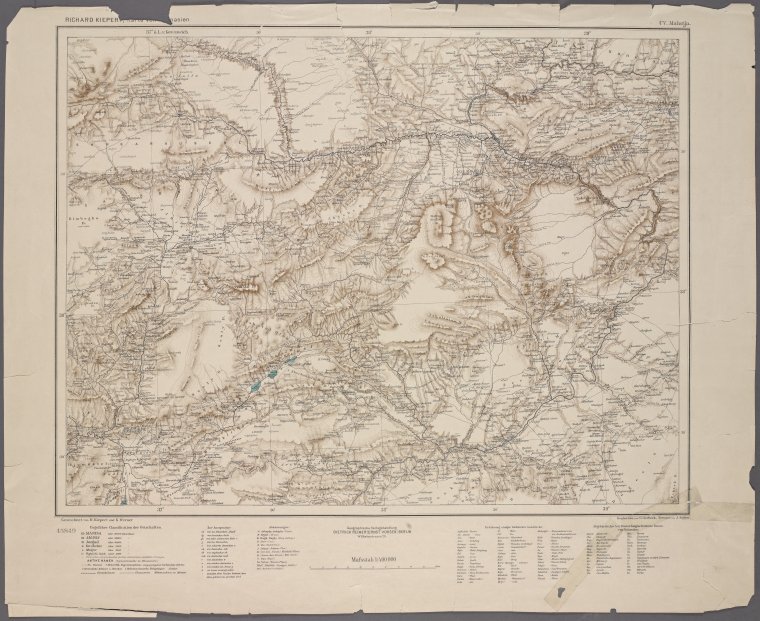
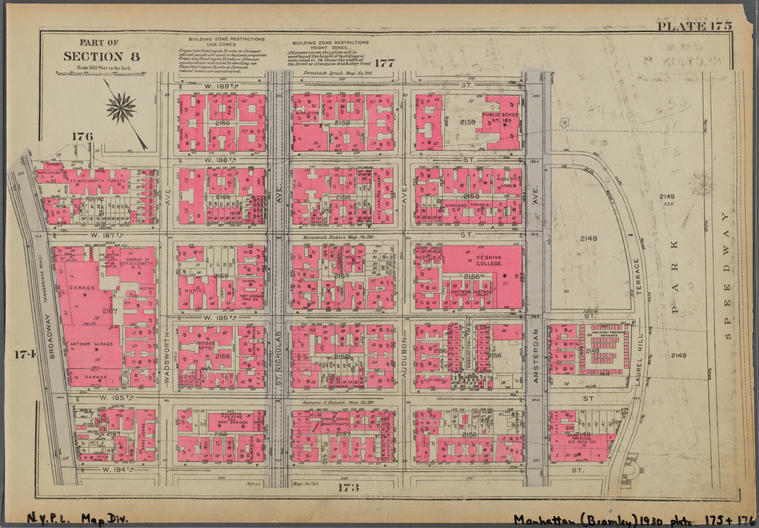
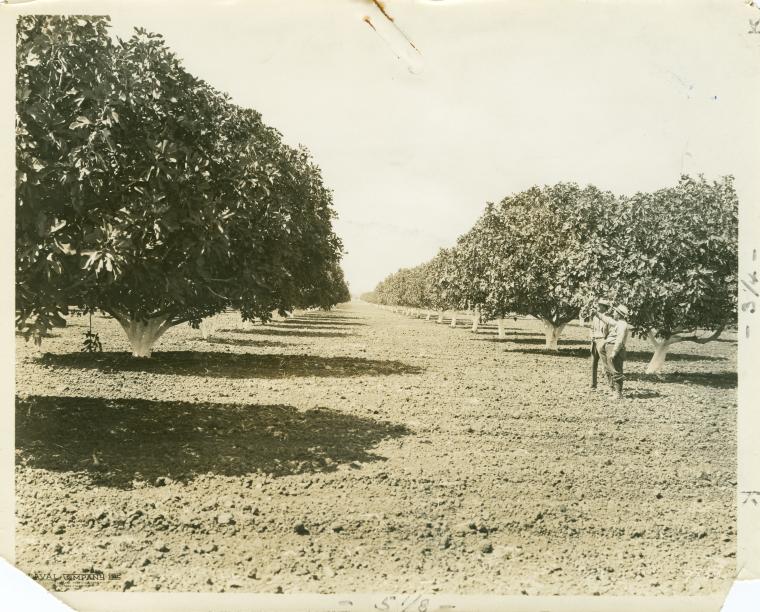

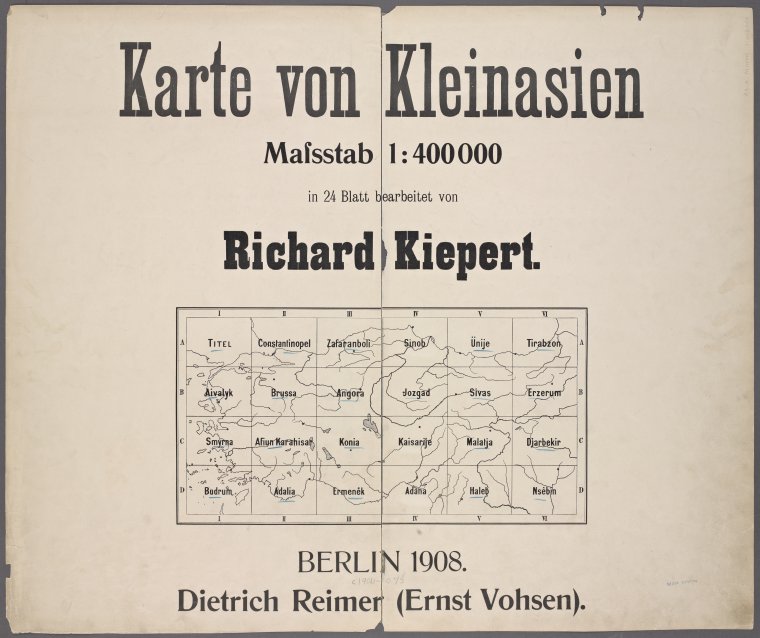
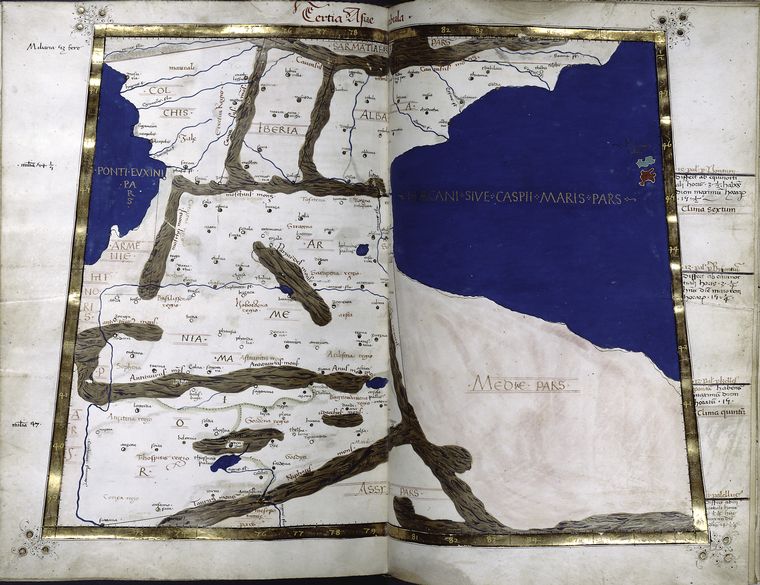


Comments
Thank you for writing this,
Submitted by Carmen (not verified) on April 23, 2015 - 4:47pm
What a fantastic article
Submitted by Grant Izmirlian (not verified) on April 24, 2015 - 3:55pm
Nancy, serious work. You are
Submitted by Berc Araz (not verified) on April 24, 2015 - 6:50pm
Mil gracias por la
Submitted by Alejandro Vartanian (not verified) on August 9, 2015 - 9:59am
This is fantastic!
Submitted by Nanor Pogosian (not verified) on February 17, 2017 - 11:16am
Wonderfully detailed and
Submitted by Schahan Tchapraste (not verified) on April 4, 2017 - 11:23am
Maps and such
Submitted by Ardemis Gurdjia... (not verified) on March 15, 2019 - 12:07am
Maps of Armenian neighborhoods in towns of the Ottoman Empire
Submitted by Nancy Kandoian (not verified) on March 19, 2019 - 11:24am